
Lighting Designer Haikal Ismail (first row, second from the left) with the Introduction to Film Studies class.
“Lights! Camera! Action!” took on a new meaning when our Film Studies students met lighting designer Haikal Ismail in an illuminating class session.
With over a decade of experience working on narrative feature films, short films, commercials and music videos, Haikal had many exciting tips for students. He shared several lighting setups he had created, using a wide array of lights and techniques. This helped our students to quickly grasp and appreciate the difference between light intensity and light quality – and how intensity can be adjusted with nets, filters and dimmers, whilst quality can be manipulated with diffusion silks or bounce boards.
Besides this, Haikal also explained that light must be ‘motivated’ — that is, it comes from a logical source as it would in real life. He cited the image shown below, where natural light seems to be coming in through the window and the doorway; however, this light is actually created with the help of multiple lights. In addition, the woman in the centre frame is ‘lit’ with highlights on her hair and rim lighting around her edge, making her stand out. Haikal added that there are even lights to ‘kick’ certain objects on the table so they pop.
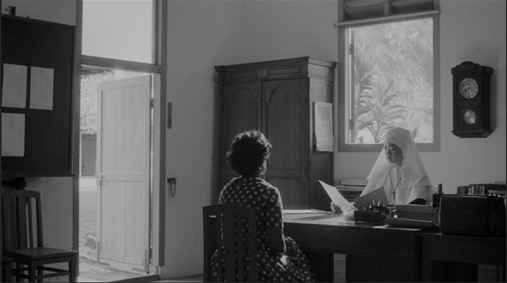
This scene is from the documentary From Victoria Street to Ang Mo Kio (director Eva Tang, 2019)
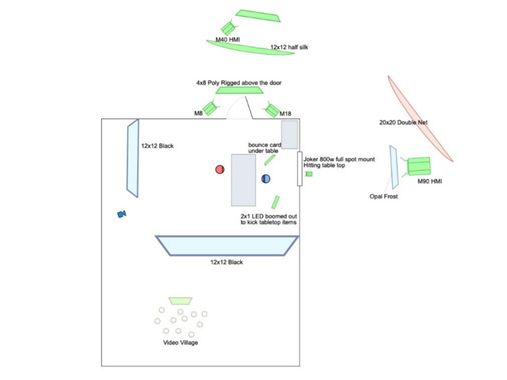
Haikal’s lighting plan for the scene in From Victoria Street to Ang Mo Kio shows his positioning of the lights, poly, silk, net and other screens.
.png?sfvrsn=d8e51f13_5)
In this scene for a commercial spot, the use of light and shadow hides the identity of the dancer while she performs. The reflection on the floor helps to create depth and complexity in the image.
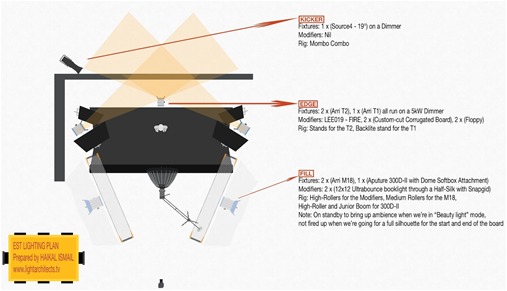
The different types of lights and their purposes in the set-up for the dance above.
The highlight of the session was when Haikal did a live demonstration to show how to create a basic three-point lighting, which comprises the key light, fill light and back or edge light. He pointed out that this is a fundamental lighting technique used in film and TV.
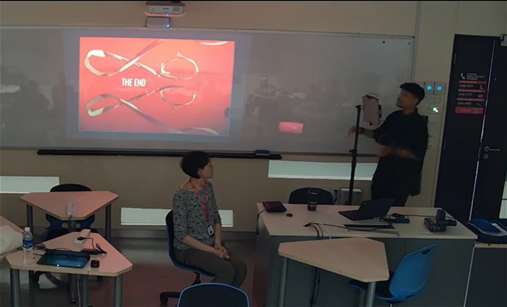
Haikal positioning a light that he will use to create key lighting.
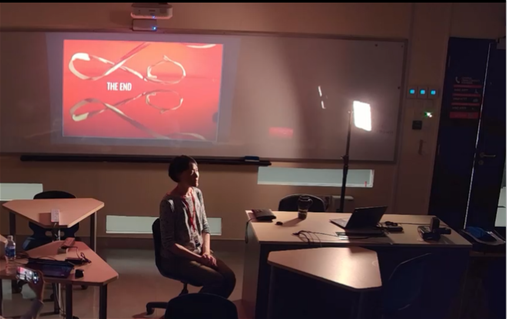
This is far-side key lighting – the shadow on the subject’s face is facing us (representing the camera), which creates contrast from the camera’s perspective.
This brings out the shape of the subject’s face, which can then be enhanced with lighting.
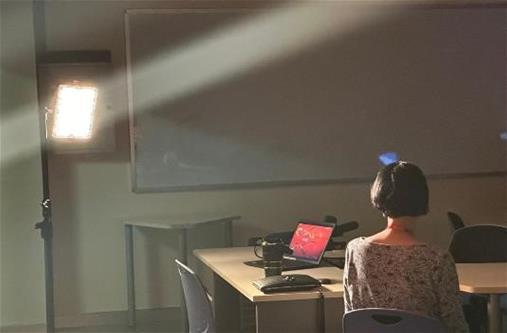
A different view of the key light.
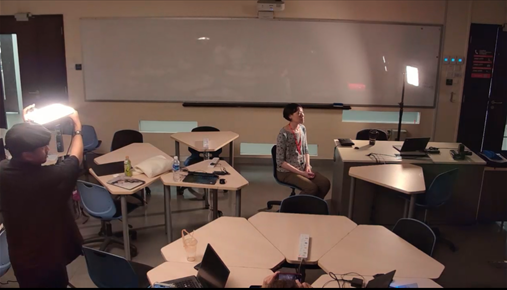
Haikal setting up the fill light – generally a soft-quality light – to balance out the shadows.
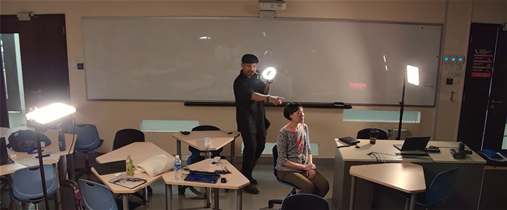
Haikal explaining the way a back light rims the subject’s hair and shoulders, making the subject pop and not blend into the background.
Sarah Chew Li Yin, SUSS English Major student, thoroughly enjoyed the session. “It’s a rare opportunity and a treat to get real industry sharing in a school lesson setting. Lighting can be challenging to grasp. I love Haikal's demo, as it helps us understand three-point lighting, diffusion and cross-lighting much better.”
Aizat bin Rosli, SUSS General Studies student with a Minor in Film Studies, reflected, “Haikal's presentation showcased how to utilise good lighting techniques for film. I especially appreciated how he shared his thought processes when planning the lighting elements for a shot and determining how to bring out the subject's best features. It was so interesting and helped me understand the practical applications of lighting in film!”
Students who participated in the session left feeling inspired and looking forward to the next session. Keen to learn more? Stay tuned for more sessions to come!